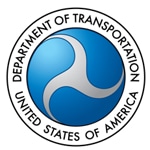
WASHINGTON – U.S. Transportation Secretary Anthony Foxx today formally unveiled the Department of Transportation’s Build America Transportation Investment Center (BATIC).
BATIC will serve as the single point of contact and coordination for states, municipalities and project sponsors looking to utilize federal transportation expertise, apply for federal transportation credit programs and explore ways to access private capital in public private partnerships.
Andrew Curtis Right will serve as the Executive Director of BATIC. Prior to serving at USDOT, Right worked in the financial services industry advising on transportation infrastructure transactions. Right received a B.S.E. in Civil Engineering and Operations Research, with certificates (minors) in Engineering and Management Systems and Public and International Affairs, graduating Summa Cum Laude and Phi Beta Kappa from Princeton University in 1997. He also received an M.B.A. from the Harvard Business School in 2003 where he was elected a Baker Scholar, the designation for the top 5 percent of the graduating class.
“With his background in civil engineering and infrastructure financing, no one is more qualified and ready to lead BATIC than Andrew,” said U.S. Transportation Secretary Anthony Foxx. “He and his team will provide project partners and potential investors with the clarity and technical assistance they need to move more projects forward and reduce our nation’s infrastructure deficit.”
BATIC was established a year ago and is the product of President Obama’s Build America Investment Initiative, a government-wide effort aimed to harness the potential of private capital to complement government funding. BATIC will assist project sponsors to navigate the procedural, permitting, and financial barriers to increased infrastructure investment and development.
BATIC will work with AASHTO through a cooperative agreement to establish The BATIC Institute: An AASHTO Center for Excellence (the Institute). The BATIC Institute will aim to improve State DOTs and other public sector organizations’ ability to effectively employ project finance tools through a program of training, sharing best practices, and technical assistance. As part of this effort, AASHTO and USDOT will work with project sponsors across the country to identify institutional capacity building needs and develop resources.
“Transportation departments are increasingly challenged to find the financial resources needed to maintain and modernize their aging infrastructure systems,” said AASHTO Executive Director Bud Wright. “This Institute is a vital resource for state and local government officials looking to identify and utilize ‘real world’ solutions to finance transportation projects.”
In the fall of 2016, the Department of Transportation will be unveiling a new state of the art center of excellence for BATIC. The space will be modernized to include updated standard design features, modernized technology, and collaborative space designed to foster the “one stop shopping” concept that the BATIC embodies as a core business practice.
Secretary Foxx and Right will travel to New Jersey on Thursday to participate in a BATIC press conference at the Port of Newark.
For more information, please visit www.transportation.gov/BATIC.
 Washington – The U.S. Department of Transportation (DOT)’s Federal Railroad Administration (FRA), the State of North Carolina and the Commonwealth of Virginia announced today that they have signed off on the Final Environmental Impact Statement (FEIS) for the proposed Richmond to Raleigh (R2R) passenger rail line along the Southeast Corridor. The completion of the FEIS is one of the final steps necessary before construction of the project can move forward once funding is secured.
Washington – The U.S. Department of Transportation (DOT)’s Federal Railroad Administration (FRA), the State of North Carolina and the Commonwealth of Virginia announced today that they have signed off on the Final Environmental Impact Statement (FEIS) for the proposed Richmond to Raleigh (R2R) passenger rail line along the Southeast Corridor. The completion of the FEIS is one of the final steps necessary before construction of the project can move forward once funding is secured. WASHINGTON – U.S. Senators Richard Blumenthal (D-Conn.) and Cory A. Booker (D-N.J) with U.S. Representatives James P. McGovern (D-Mass.) and Jerrold Nadler (D-N.Y.) March 26 wrote to U.S. Department of Transportation (DOT) Secretary Anthony Foxx, urging him to review results of a 2012 DOT study on the impact of heavy commercial trucks on the nation’s roads and highways prior to publicly releasing the study results, noting their concerns with the study’s methodology and data.
WASHINGTON – U.S. Senators Richard Blumenthal (D-Conn.) and Cory A. Booker (D-N.J) with U.S. Representatives James P. McGovern (D-Mass.) and Jerrold Nadler (D-N.Y.) March 26 wrote to U.S. Department of Transportation (DOT) Secretary Anthony Foxx, urging him to review results of a 2012 DOT study on the impact of heavy commercial trucks on the nation’s roads and highways prior to publicly releasing the study results, noting their concerns with the study’s methodology and data. WASHINGTON –U.S. Sens. Patty Murray (D-Wash.) and Susan Collins (R-Maine), chair and ranking member of the Senate Appropriations Subcommittee for Transportation, respectively, June 17 introduced a bill that would authorize a new Short Line Rail Safety Institute to enhance the safety practices and culture of short line railroads. There are 550 short line railroad companies that operate over 50,000 miles of track, or nearly one third of the national railroad network. The tracks can be as short as two miles or up to more than 1,000 miles long.
WASHINGTON –U.S. Sens. Patty Murray (D-Wash.) and Susan Collins (R-Maine), chair and ranking member of the Senate Appropriations Subcommittee for Transportation, respectively, June 17 introduced a bill that would authorize a new Short Line Rail Safety Institute to enhance the safety practices and culture of short line railroads. There are 550 short line railroad companies that operate over 50,000 miles of track, or nearly one third of the national railroad network. The tracks can be as short as two miles or up to more than 1,000 miles long. The Obama administration on Tuesday (April 29) sent a bill to Congress that aims to cover an expected shortage in money to spend on America’s bridges, roads and transit systems, but Republican opposition could prevent its passage.
The Obama administration on Tuesday (April 29) sent a bill to Congress that aims to cover an expected shortage in money to spend on America’s bridges, roads and transit systems, but Republican opposition could prevent its passage.